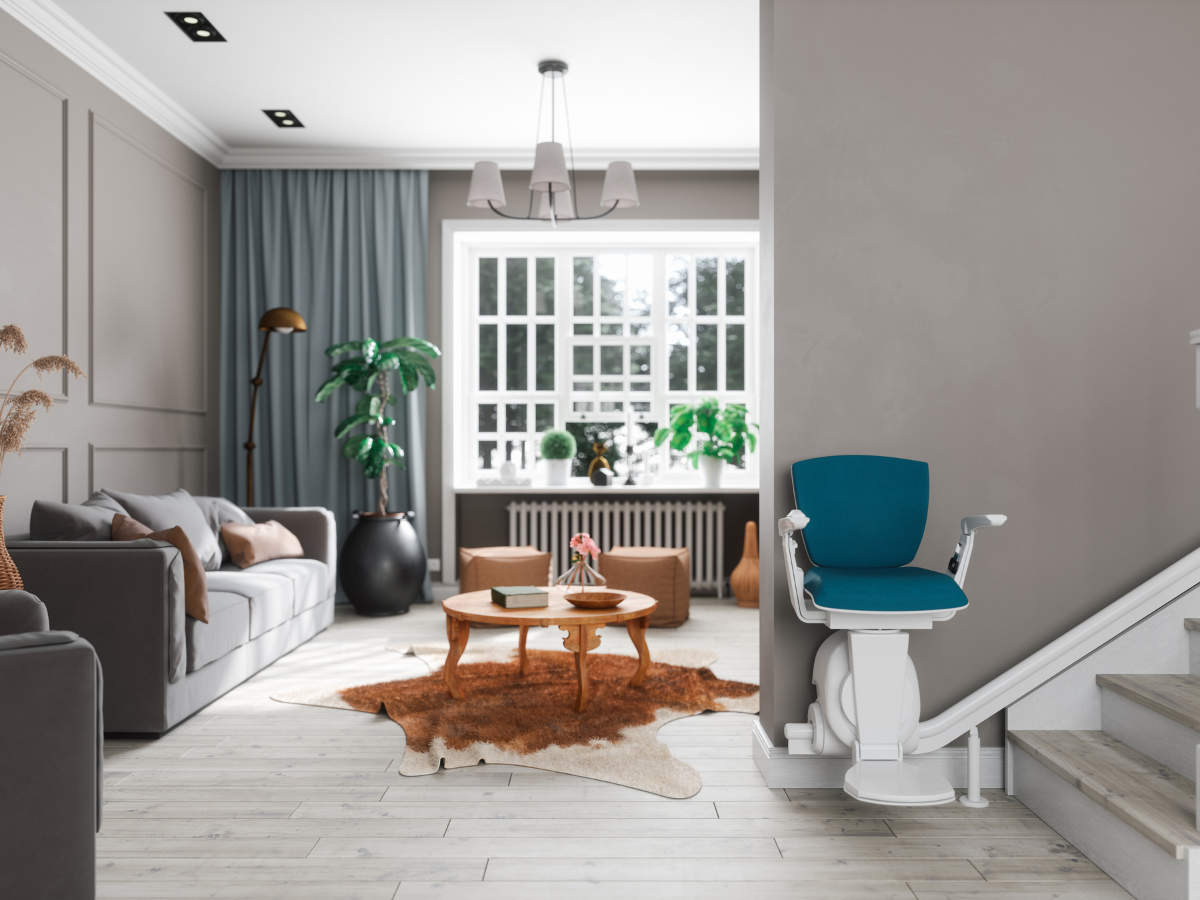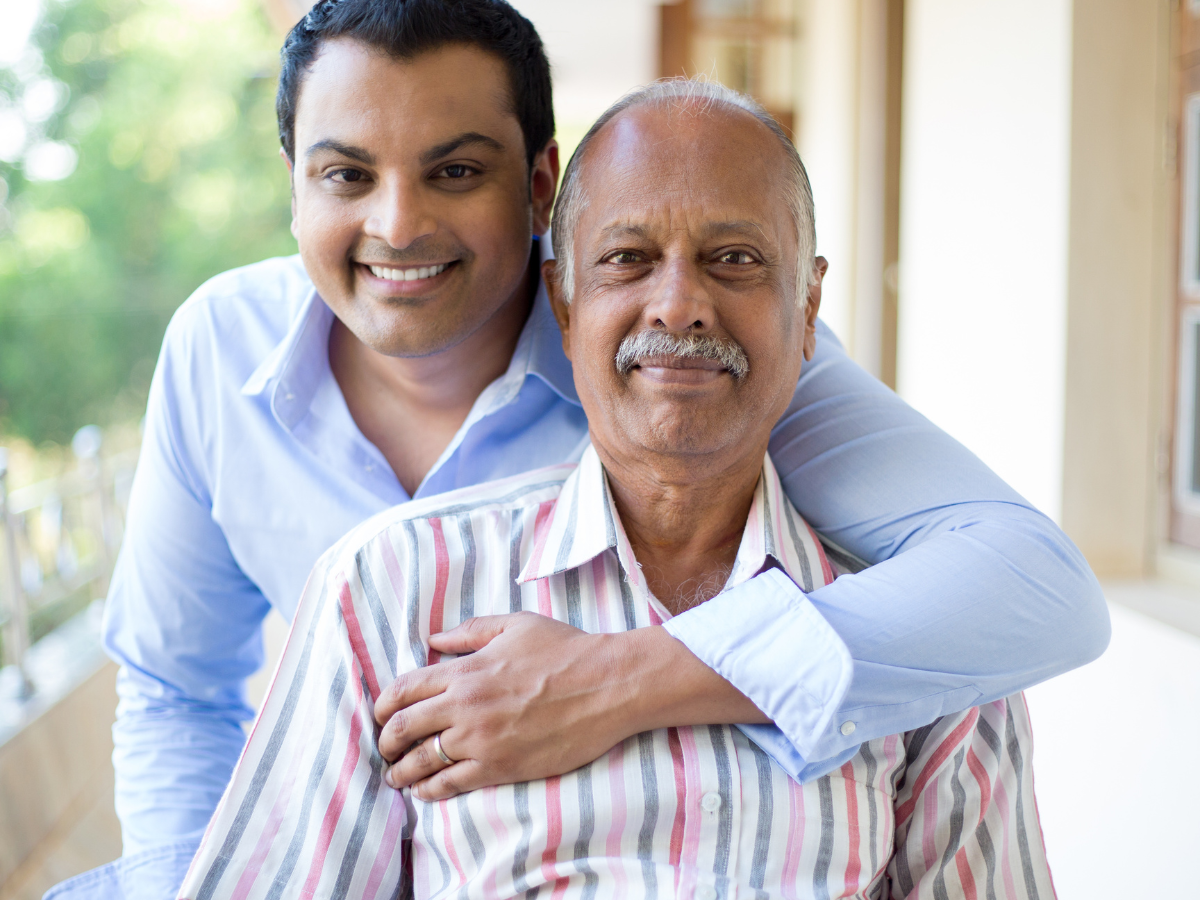Knee pain is a common complaint among seniors. Naturally, it can significantly impact their quality of life. Whether it’s due to arthritis, injury or wear and tear, finding ways to manage knee pain is crucial for maintaining mobility and independence. With pain in the knees, everyday movement can become quite the chore. This is especially true for older adults who live in homes with staircases. Getting up and down the stairs with knee pain can be incredibly cumbersome.
What are the most common causes of knee pain for seniors?
Osteoarthritis.
Osteoarthritis tops the list of knee pain culprits. It is the most common form of arthritis that affects the knee joint. It occurs when the protective cartilage that cushions the ends of your bones wears down over time. “Osteoarthritis wears down cartilage, the material that cushions the ends of bones,” explains Health Canada, “Some studies suggest that when the joints are unable to react properly to physical stress on them, the cartilage is damaged and arthritis develops.”
Their website goes on to inform that both men and women are equally at risk for developing osteoarthritis up until the age of 55. After that age, women tend to be more vulnerable. In women, the condition predominantly impacts the hands, knees, ankles and feet. In men, the hips, wrists and spine are more likely to be affected.
Rheumatoid arthritis.
Unlike osteoarthritis, which is caused by wear and tear, rheumatoid arthritis is an autoimmune disorder that causes inflammation in the joints. Also known as RA, it is a common disease that impacts multiple joints of the body, including the knees. The cause for rheumatoid arthritis is unknown.
Arthritis Society Canada explains that the body’s immune system normally functions to protect against infections but can sometimes attack healthy tissues by mistake. “In rheumatoid arthritis, the immune system attacks the lining of joints leading to inflammation, swelling, pain, and stiffness,” informs their website, “Inflammation is like a fire. It can spread throughout the body and damage areas it touches.”
Injuries and overuse.
As we all know, accidents can happen. For many seniors, sprains, strains and tears in the ligaments and tendons around the knee are commonplace. Of course, this can lead to pain and discomfort. As well, repetitive movements or excessive strain on the knee joints can cause pain and inflammation. This is common in older adults who remain particularly active in sports or other high-velocity activities.
“Injuries are the most common cause of knee problems,” contends HealthLinkBC, “Sudden (acute) injuries may be caused by a direct blow to the knee. Or they may be caused by abnormal twisting, bending the knee, or falling on the knee. Pain, bruising, or swelling may be severe and occur within minutes of the injury. Nerves or blood vessels may be pinched or damaged during the injury. The knee or lower leg may feel numb, weak, or cold. It may tingle or look pale or blue.”
What can be done to mitigate the discomfort associated with knee pain?
Maintain a healthy weight.
When you’re good to your body, you do your knees a big favour. Excess weight can put additional pressure on the knee joints. As you can imagine, this exacerbates pain and discomfort. Seniors should aim to maintain a healthy weight to reduce the strain on their knees. A balanced diet and regular exercise can help achieve and maintain a healthy weight, reducing the risk of knee pain.
Low-impact exercises such as swimming, cycling and walking are ideal for seniors with knee pain. By adding physical therapy to regular exercise, you utilize a combination that can help strengthen the muscles around the knee joints. The end goal is to provide better support and stability in the knee area. Physical therapy can also help improve flexibility and range of motion in the knees, reducing stiffness and discomfort.
Use proper footwear.
Keep your feet comfy and your knees will thank you! When you wear supportive footwear, you reduce the impact on the knees. Seniors should opt for shoes with good arch support and cushioning to absorb shock. Avoiding high heels and shoes with inadequate support can also help prevent knee pain and discomfort.
“High heels, while fashionable, put your knees and low back at risk,” notes Arthritis Society Canada, “A University of Iowa study measured how different shoes impacted force on the knee joint and found that the height of heels changed the study participants’ stride. As the heel height increased, they also saw an increase in compression on the medial, or inside, of the knee — possibly putting people who wear heels at risk for knee osteoarthritis.”
Apply hot and cold therapy.
A little heat and little ice can go a long way in providing some relief from knee pain. Applying a heating pad or warm compress to the knee can help relax the muscles and increase blood flow. This tends to reduce stiffness and pain. On the other hand, applying an ice pack can help reduce inflammation and numb the area. This can provide relief from pain and swelling.
“If there is swelling in your knee, you should ice for at least 72 hours until the swelling goes down,” informs UnityPoint Health, “After that, heat can be used to help regain mobility. If you are suffering from joint tightness and stiffness, heat can help relax these away. Make sure that there is no swelling before you begin to use heat on your knee.”
Invest in a power lift recliner.
The simple acts of sitting down and standing up can be stressful on the knees of older adults. A power lift recliner can make both so much easier! A power lift chair recliner lets you find your most comfortable position with just the touch of a button. Some lift chairs recline all the way back to a sleep-ready position. Other models offer additional recline positions to increase circulation and provide hidden pleasures like heat and massage.
When you’re done relaxing, the same button that got you there will lift you right back up to your feet again! At Advantage Home Health Solutions, we always ensure that you have the complete picture to make an informed decision. To learn more about our power lift recliners, please don’t hesitate to give us a call at 403-460-5438. You may also email us by filling out the form on our Contact page!



